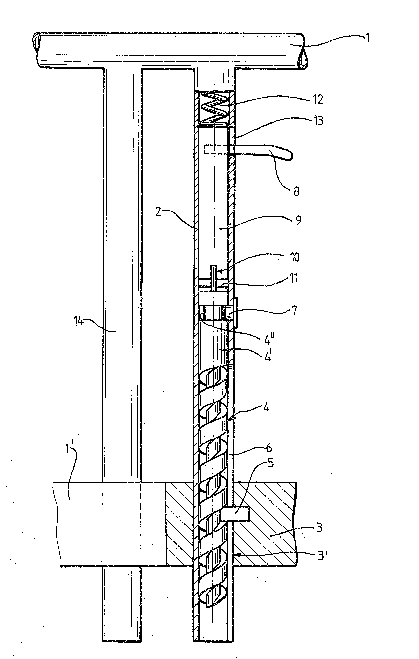Some of the information on this Web page has been provided by external sources. The Government of Canada is not responsible for the accuracy, reliability or currency of the information supplied by external sources. Users wishing to rely upon this information should consult directly with the source of the information. Content provided by external sources is not subject to official languages, privacy and accessibility requirements.
Any discrepancies in the text and image of the Claims and Abstract are due to differing posting times. Text of the Claims and Abstract are posted:
| (12) Patent: | (11) CA 1305400 |
|---|---|
| (21) Application Number: | 1305400 |
| (54) English Title: | DEVICE FOR VERTICAL ADJUSTMENT OF ARM SUPPORTS ON CHAIRS, ESPECIALLY WHEEL CHAIRS |
| (54) French Title: | DISPOSITIF DE REGLAGE VERTICAL DES APPUI-BRAS D'UN FAUTEUIL, EN PARTICULIER D'UN FAUTEUIL ROULANT |
| Status: | Expired and beyond the Period of Reversal |
| (51) International Patent Classification (IPC): |
|
|---|---|
| (72) Inventors : |
|
| (73) Owners : |
|
| (71) Applicants : | |
| (74) Agent: | SMART & BIGGAR LP |
| (74) Associate agent: | |
| (45) Issued: | 1992-07-21 |
| (22) Filed Date: | 1989-06-12 |
| Availability of licence: | N/A |
| Dedicated to the Public: | N/A |
| (25) Language of filing: | English |
| Patent Cooperation Treaty (PCT): | No |
|---|
| (30) Application Priority Data: | |||||||||
|---|---|---|---|---|---|---|---|---|---|
|
A b s t r a c t
In a device for vertical adjustment of arm supports on
chairs, especially wheel chairs, each arm support (1) is
carried by a support pipe (2) longitudinally displaceably
arranged in a bore (3') of a part (3) rigidly connected to
the chair frame (1'), the support pipe (2) being lockable to
the chair frame (1',3) in its various positions of
longitudinal displacement. It is aimed at providing a device
of this kind wherein the height adjustment of the arm
support occurs infinitely variably and controlled, and
wherein the height-adjusting device is handy in use. For
this purpose a longitudinally non-displaceable motion screw
is rotationally supported within the support pipe (2), a lug
(5) rigidly connected to the chair frame (1',3) engaging
said motion screw, the latter being adapted to cooperate
with a manually releasable (8) locking device (9, 10) which
in the locking position prevents rotation of the motion
screw (4).
(Figure 1)
Note: Claims are shown in the official language in which they were submitted.
Note: Descriptions are shown in the official language in which they were submitted.

2024-08-01:As part of the Next Generation Patents (NGP) transition, the Canadian Patents Database (CPD) now contains a more detailed Event History, which replicates the Event Log of our new back-office solution.
Please note that "Inactive:" events refers to events no longer in use in our new back-office solution.
For a clearer understanding of the status of the application/patent presented on this page, the site Disclaimer , as well as the definitions for Patent , Event History , Maintenance Fee and Payment History should be consulted.
| Description | Date |
|---|---|
| Inactive: Adhoc Request Documented | 1996-07-21 |
| Time Limit for Reversal Expired | 1996-01-22 |
| Letter Sent | 1995-07-21 |
| Grant by Issuance | 1992-07-21 |
There is no abandonment history.
Note: Records showing the ownership history in alphabetical order.
| Current Owners on Record |
|---|
| ARNFINN FROYLAND |
| THORBJORN LOHRE |
| Past Owners on Record |
|---|
| None |